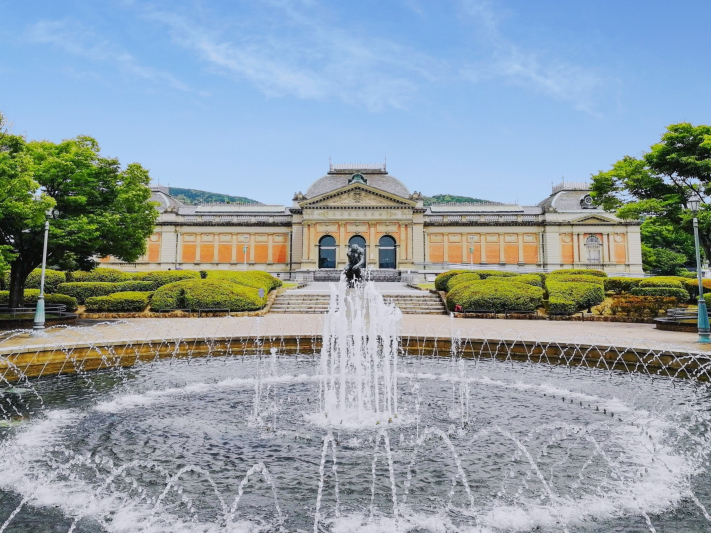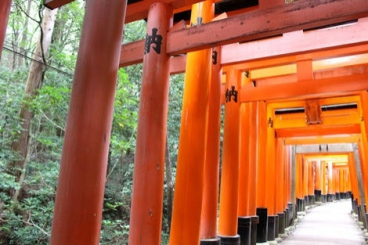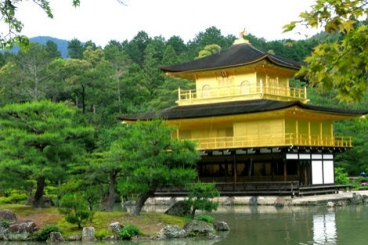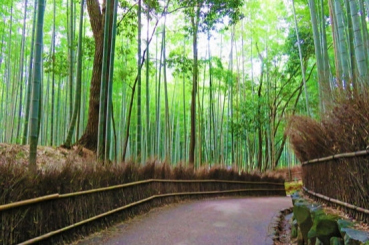- COLUMN
- More than just shrines and temples! Kyoto's 6 Hidden and Secret Tourist Spots
2022.02.22
Sightseeing Spot
SOTETSU HOTELS
SOTETSU FRESA INN
THE POCKET HOTEL
HOTEL SUNROUTE
More than just shrines and temples! Kyoto's 6 Hidden and Secret Tourist Spots

Opened in 1924, the Kyoto Botanical Garden is the oldest public botanical garden in Japan. With a total area of 240,000 square meters, the garden is home to about 12,000 species of flowers and trees, as well as one of the largest greenhouses in Japan, where visitors can view about 4,500 species of plants.
It is worth noting that the concept is divided between the southern and northern halves of the park.
The northern half of the park features a natural landscape, such as the "Japanese Forest," where visitors can enjoy the natural forest of "Nanaragi Forest," cherry blossoms, plum trees, bamboo grass, and other traditional Japanese plants, while the southern half features a Western-style garden with seasonal flower beds, roses, fountains, and waterfalls.
Address: Shimogamo Hanki-cho, Sakyo-ku, Kyoto-Shi, Kyoto
Access: 10 minutes on foot from Kitayama Station (Kyoto Municipal Subway) or from Kitaoji Station
(Kyoto Municipal Subway).
Take City Bus No.1 or Kyoto Bus bound for "Shizuhara" or "Ichihara", and get off at
"Shokubutsuen-mae" bus stop.
Buildings are also an attraction at the Kyoto National Museum
Kyoto National Museum's main attractions are the building named "Meiji Koto-kan" and the main gate. The museum is located in the heart of the city of Kyoto. The imposing style of the building is simply overwhelming. Another feature of the Kyoto National Museum is its many attractions other than the exhibits, such as the teahouse "Tan'an," a sukiya-style tea house. The museum's collection of artworks can be seen in the Heisei-Chishinkan.
Address: 527 Chaya-cho, Higashiyama-ku, Kyoto-Shi, Kyoto
Access: A 7 minute walk from Shichijo Station (Keihan Railway).
A 20 minute walk from Kyoto Station on JR Lines.
Take the city bus No. 100 from the D1 stop in front of Kyoto Station, or No. 206 or 208 from the D2 stop, get off at "Museum Sanjusangendo-mae" bus stop.
Take City Bus No. 207 from Shijo Kawaramachi and get off at Higashiyama Shichijo bus stop 3 minutes walk.
Take the Princess Line Bus bound for Kyoto Women's University and get off at Higashiyama Shichijo Bus Stop.
More than 300,000 manga materials can be viewed at the "Kyoto International Manga Museum"
The combination of Kyoto and manga may come as a surprise, but the Kyoto International Manga Museum is a manga hall of fame established jointly by Kyoto Seika University, which has a manga department, and the city of Kyoto.
This is a place where you can fully enjoy manga from beginning to end, with autographs and drawings of manga artists painted all over the walls of the cafe.
Address: Karasuma-dori Oike-agaru, Nakagyo-ku, Kyoto-Shi, Kyoto (Former Tatsuike Elementary School)
Access: A 2 minute walk from Karasuma-Oike Station on the Kyoto Municipal Subway Line.
A 11 minute walk from Karasuma Station on the Hankyu Railway Kyoto Main Line.
By Kyoto Municipal Bus Lines 15, 51, 65 Get off at Karasuma Oike stop.
Must-see for Ito Jakuchu fans: "Sekihouji Temple"
Located near the Fushimi Inari Taisha Shrine, Sekihouji Temple is related to Jakuchu Ito, a popular painter of the Edo period, where you can see the Five Hundred Arhats, which Jakuchu drew the rough sketches and a professional stonecutter carved. Of the more than 1,000 arhats that were created, more than 400 remain today. It is also a must-see for its serene atmosphere.
Address: 26 Fukakusa Ishimine Terayama-cho, Fushimi-ku, Kyoto-Shi, Kyoto
Access: A 6 minutes walk from "Ryukokudaimae Fukakusa" on the Keihan Main Line.
Big collection of cute “rabbits”at "Okazaki Shrine"
The image of a shrine is that of a fox acting as a servant to the gods, but at Okazaki Shrine, the role is played by a rabbit. It is said that the name comes from the fact that many wild rabbits inhabited the area when the shrine was built.
In the precincts of the shrine, there are Koma (koma). In the precincts of the shrine, there are statues of various kinds of rabbits, such as Koma-rabbits (guardian rabbits), Maneki-rabbits (beckoning rabbits), and Kodomo-uke (child-rearing rabbits).
The shrine is also famous for its rabbit omikuji (fortune telling), which is said to be beneficial for childbirth, safe delivery and marriage.
The shrine is also very popular for its Usagi Omikuji (fortune telling).
Address: 51 Okazaki-Higashi-Tenno-cho, Sakyo-ku, Kyoto City, Kyoto Prefecture
Access: A 22 minutes on foot from Exit 1 of Higashiyama Station on the Tozai Line of the Kyoto Municipal Subway.
A 30 minutes by express line 100, approx 3 minutes walk from Okazaki-michi.
A short walk from Okazaki-jinja-mae Station on City Bus Lines 32, 203, 93, and 204.
"Ishibetsukoji," where you can feel Kyoto just by walking
Ishibe Koji is a narrow, stone-paved alley near Yasaka Shrine. It is said to be named after the stone walls of the town houses that line both sides of the street, which look like stone walls. It is attractive because it is filled with a certain Kyoto-like atmosphere. The area used to be lined with teahouses, but now it is lined with ryotei (traditional Japanese restaurants), coffee shops, and inns. In the evening, these buildings are lit up, creating a different atmosphere from the daytime.
Address: Ishibetsukoji, Shimoaru, Yasaka Shrine South Gate, Higashiyama-ku, Kyoto City
Access: A 5 minutes walk from Higashiyama Yasui bus stop.
Keihan "Shijo" about 15 minutes on foot.
A 18 minutes walk from Hankyu Kawaramachi Station.
Category
Brands
Monthly archive
- 2025(8)
- 2024(11)
- 2023(5)
- 2022(12)
- 2021(3)
- 2020(2)
- 2019(15)
- 2018(15)
- 2017(14)
- 2016(22)
- 2015(9)













